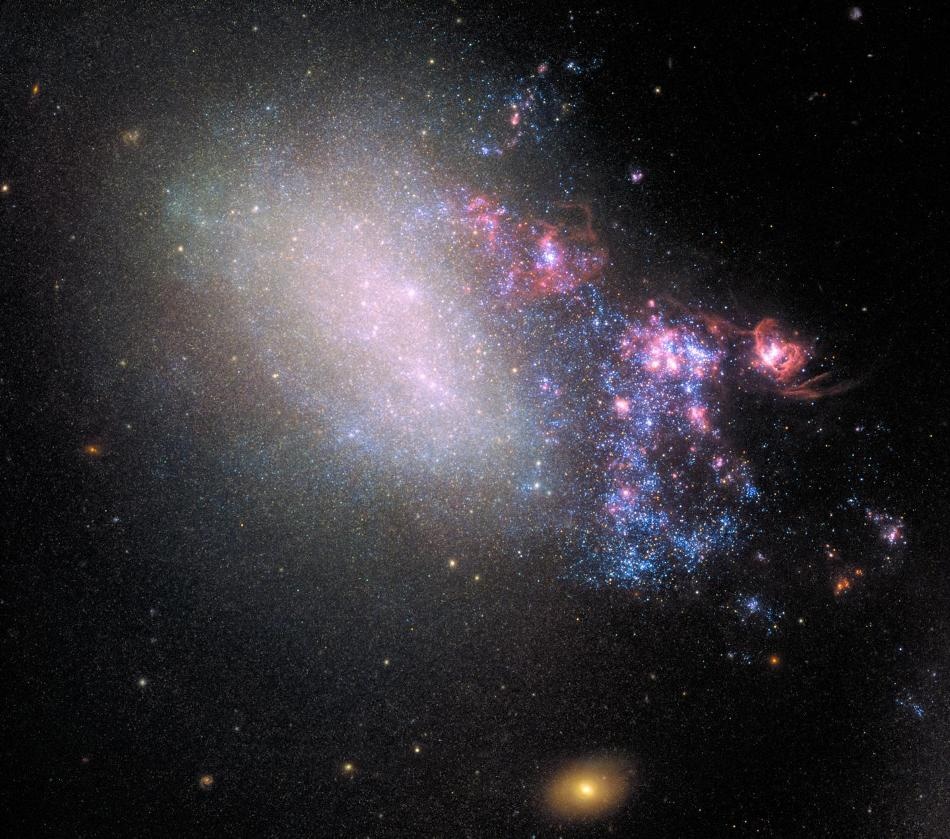May 17 2019
NGC 4485, an irregular galaxy, has exhibited all evidence of having been involved in a hit-and-run collision with a galaxy that was circumnavigating. Instead of demolishing the galaxy, the coincidental encounter is giving rise to a new generation of stars, and supposedly planets.
 This is an image of irregular galaxy NGC 4485, captured by Hubble’s Wide Field Camera 3 (WFC3). (Image credit: NASA, ESA; acknowledgment: T. Roberts (Durham University, UK), D. Calzetti (University of Massachusetts) and the LEGUS Team, R. Tully (University of Hawaii), and R. Chandar (University of Toledo))
This is an image of irregular galaxy NGC 4485, captured by Hubble’s Wide Field Camera 3 (WFC3). (Image credit: NASA, ESA; acknowledgment: T. Roberts (Durham University, UK), D. Calzetti (University of Massachusetts) and the LEGUS Team, R. Tully (University of Hawaii), and R. Chandar (University of Toledo))
As revealed by a high proportion of star-incubating pinkish nebulas and young blue stars, the galaxy’s right side is gleaming with star formation. By contrast, its left side appears intact. It includes traces of the previous spiral structure of the galaxy, which was earlier experiencing normal galactic evolution at some point in time.
NGC 4490, the larger perpetrator galaxy, is off the bottom of the frame. Millions of years ago, both the galaxies bumped into each other and are currently located 24,000 light-years apart. The gravitational tug-of-war between the galaxies gave rise to rippling patches of higher-density gas and dust inside both the galaxies. This activity set off a flurry of star formation.
This galaxy is a proximate example of the type of cosmic bumper-car activity that was a commonplace billions of years ago when the size of the universe was smaller and galaxies were located closer to one another.
NGC 4485 is located 25 million light-years away in the northern constellation Canes Venatici (the Hunting Dogs).
The new image, taken by Hubble’s Wide Field Camera 3 (WFC3), offers more insights into the complexities of evolution of the galaxy.
The Hubble Space Telescope is a project of international collaboration between ESA (European Space Agency) and NASA. The telescope is managed by NASA’s Goddard Space Flight Center in Greenbelt, Maryland. Hubble science operations are conducted by the Space Telescope Science Institute (STScI) in Baltimore, Maryland. The Association of Universities for Research in Astronomy in Washington, D.C., operates STScI for NASA.